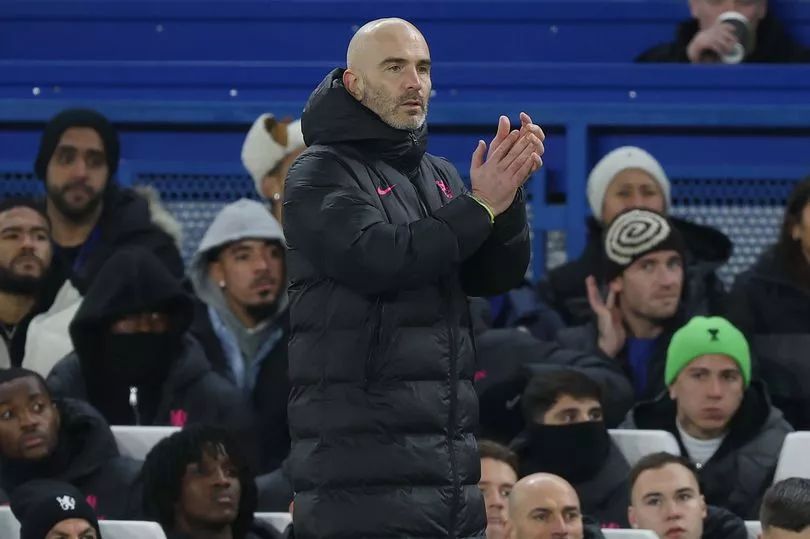Jobs
Labor Day question: Do Democratic presidents really lead Republicans 50 to 1 on jobs?

The debate over how much the president can affect the economy is a never-ending one, but I believe it is never a zero effect. I believe a president’s policies matter, at least to a degree.
Watch: Bill Clinton full speech at Democratic National Convention
Former President Bill Clinton was among the speakers on the third night of the Democratic National Convention in Chicago.
Here is question for the long Labor Day weekend: Are you looking for the next president to deliver on jobs?
A seemingly wild statistic making the rounds suggests that if job creation is your top priority, you may be looking at a no-brainer between Democratic nominee Kamala Harris and her Republican opponent, Donald Trump. That is, if we go by the party affiliation of the president.
Since 1989, 51 million jobs have been created in the United States, based on figures from the Bureau of Labor Statistics. Fifty million of those jobs have been under Democratic presidents. In other words, almost all of them.
Former President Bill Clinton brought up the eye-popping disparity during his speech on Aug. 21, the third night of the Democratic National Convention.
“I swear I checked this three times,” Clinton said. “Even I couldn’t believe it. What’s the score? Democrats 50, Republicans one.”
Former President Clinton’s figures on jobs check out
So, I know what you’re thinking. He is a politician backing his own Democratic party over Trump and the Republicans in November.
Undoubtedly true.
But Clinton’s figures check out, according to a fact-check by The Washington Post and others. In March, PolitiFact, a nonpartisan fact-checker, rated a nearly identical claim by Democratic political strategist Simon Rosenberg, as “Mostly True.” PolitiFact upheld Rosenberg’s numbers but added that his conclusion “ignores caveats around divided governance and lucky timing.”
“The Republican Congress of 1995 to 2001 might deserve a share of the credit for the job growth under Clinton,” PolitiFact wrote, “as could the Democratic House that served during Republican President Ronald Reagan’s entire presidency.”
I still believe this 50-to-1 jobs stat should inspire reporters with access to Trump to at least ask him about it. And it’s a valid question to put to Republican candidates, generally speaking. After all, it involves the economy, which Americans list as one of their top concerns every election.
COVID-19 recovery is only part of Biden’s big job numbers
The time span, roughly the end of the Cold War in 1989 to the present, covers four Republican presidential terms: President George H.W. Bush, who served one term; his son, George W. Bush, who served two terms; and Trump, who served one term.
The period covers five Democratic presidential terms: Clinton and Barack Obama, who both served two terms, and President Joe Biden, who is in his first term.
Biden’s administration follows a time of significant employment disruptions during the COVID-19 pandemic. However, it was never true, as Trump has claimed, that Biden’s job gains were due to the hiring of undocumented immigrants and “bounce-back” jobs from COVID.
There has been some job growth related to laid-off people finding new jobs, but that still leaves Biden in good shape. His job numbers passed the pre-pandemic levels of employment in June 2022 and have since created 6.2 million additional jobs, according to PBS.
As a president, he is somewhat unmatched in job creation in the modern era. His policies are part of the reason. The bipartisan bill that passed in March of 2021, the American Rescue Plan Act, by itself created 1 to 4 million jobs.
As analyst Rosenberg states: “Biden’s 15.4m jobs are 8 times as many jobs as were created in the 16 years of the last 3 Republican Presidencies, combined.” (Emphasis his.)
Obama moves helped the economy at great political cost
There are other caveats to the jobs gap between the parties. The pandemic started during Trump’s administration and the related job losses left him in a hole, as the only president in the modern era who did not finish his term with a net gain in jobs. Even giving him this benefit of the doubt, the raw numbers debunk a firm belief by many of his supporters that he was a great jobs president. He wasn’t.
Meanwhile, timing can play a role, as PolitiFact noted. Bill Clinton’s administration coincided with the tech boom, which sprouted many new companies that would go on to create the online infrastructure and devices we now take for granted.
But Democratic administrations have had their own challenges, as all presidencies do. Obama in particular was handed the Great Recession and unemployment hovering around 10% when his term began in January 2009.
He passed massive economic stimulus with precious little Republican support. He also signed into law the Affordable Care Act, aka Obamacare. All this large-scale legislation came at a political cost as his party was wiped out in the 2010 midterm elections.
But Obama was able to hand to his successor, Trump, an unemployment rate that had been cut in half, “below the historical norm,” and an economy that had added 11.6 million net jobs. Plus, at least 15 million more people had health insurance to help them weather the hard times.
Let’s be real. It would not have been in the same place with no stimulus, which economists at the time supported, and which the GOP in Washington was nearly united against.
How much difference can a president make?
The debate over how much the president can affect the economy is a never-ending one, but I believe it is never a zero effect. I believe a president’s policies matter, at least to a degree.
And that’s why it’s worth at least asking Trump and the GOP what is it about their policies that could lead to a 50-to-1 disparity in getting Americans into new jobs.
Opinion Editor Myron B. Pitts can be reached at mpitts@fayobserver.com or 910-486-3559.









